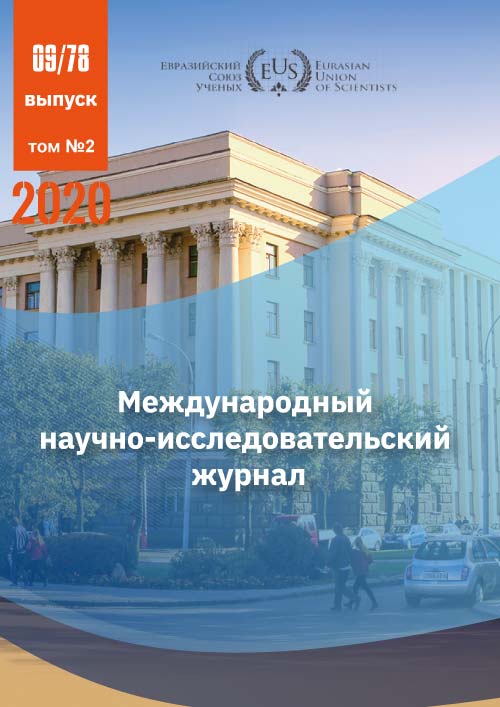MORPHOLOGICAL AND ELECTRON MICROSCOPIC CHARACTERISTICS OF THE SKIN AND MUCOUS MEMBRANE AT VARIOUS STAGES OF COMBINED TREATMENT OF ORAL CANCER
Abstract
Using electron microscopic studies, the structural and functional reorganization of the neck skin and mucous membrane in patients with malignant tumors of the oral cavity at various stages of combined treatment is presented. Significant violations of tissue and cellular elements, their ultastructures, especially fibroblasts, intercellular substance of connective tissue and vessels of the microcirculatory bed were revealed, which exhausts the volume of compensatory and adaptive capabilities of tissue and cells included in the irradiation zone. The degree of structural and functional disorders in irradiated tissues is proportional to the amount of SOD.
References
2. Комбинированное и комплексное лечение больных со злокачественными опухолями: Руководство для врачей/Под ред. В.И. Чиссова. – М.: Медицина, 1989. – 560с.: ил. – ISBN 5-22501572-7.
3. Лучевая терапия злокачественных опухолей. Руководство для врачей/Е.С. Киселева, Г.В. Голдобенко, С.В. Канаев и др. Под ред. Е.С. Киселевой. – М.: Медицина, 1996. – 464 с.: ил. ISBN 5-225-00977-8
4. Матчин А.А., Стадников А.А. Структурные изменения кожи и слизистой оболочки языка при различных этапах комбинированного лечения больных раком органов ролости рта // Морфологические ведомости, - 2006, - № 1-2, - С. 33-38
5. Надежина Н.М., Галстян И.А. Лечение местных лучевых поражений. Под ред. проф. К.В. Котенко и проф. А.Ю. Бушманова. ФГБУ ГНЦ ФМБЦ им. А.И. Бурназяна. - М.: 2013.- 99 с.
6. Рахманов В.А., Линденбратен Л.Д., Романенко Т.Ф. и др. Изменения кожи в области полей облучения в отдаленные сроки после рентгено- и гамма-терапии злокачественных опухолей// Мед. радиол. - 1963. -№ 10. – С. 43-47
7. Хосева Е. Н. Клинические варианты, особенности течения и дифференцированная терапия ранних лучевых реакций и повреждений кожи: Автореф. дис. канд. мед. наук. – Екатеринбург, 2006. – 23 с.
CC BY-ND
A work licensed in this way allows the following:
1. The freedom to use and perform the work: The licensee must be allowed to make any use, private or public, of the work.
2. The freedom to study the work and apply the information: The licensee must be allowed to examine the work and to use the knowledge gained from the work in any way. The license may not, for example, restrict "reverse engineering."
2. The freedom to redistribute copies: Copies may be sold, swapped or given away for free, in the same form as the original.







